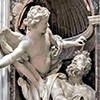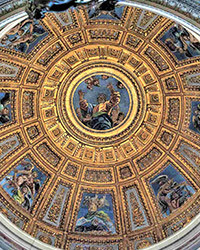Bernini’s Habakkuk and the Angel, meaning the story of a mysterious journey into the lion’s den
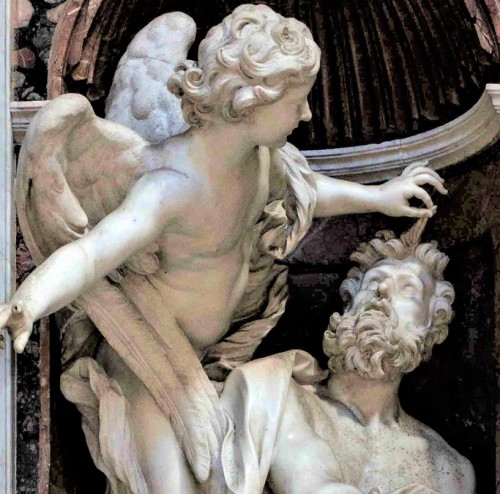
Habakkuk and the Angel, fragment, Gian Lorenzo Bernini, Chigi Chapel, Basilica of Santa Maria del Popolo
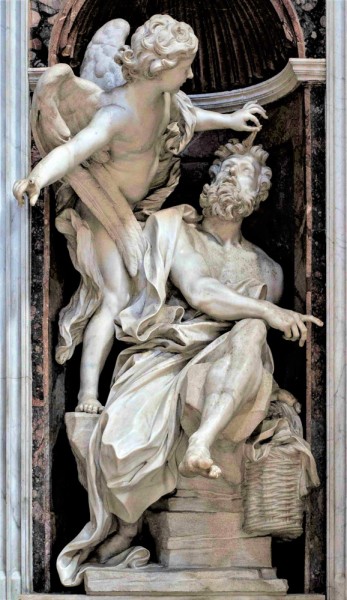
Habakkuk and the Angel, Gian Lorenzo Bernini, Chigi Chapel, Basilica of Santa Maria del Popolo
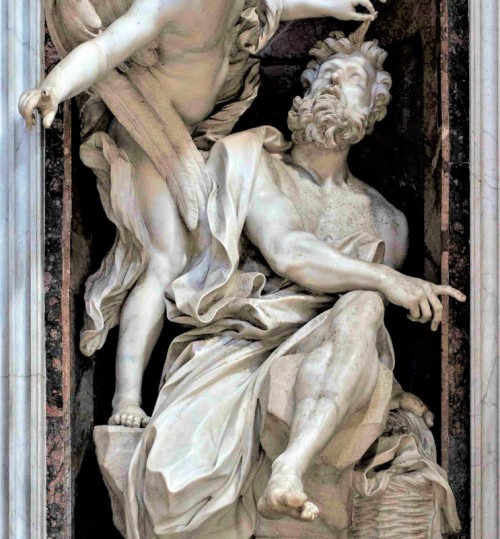
Habakkuk and the Angel, fragment, Gian Lorenzo Bernini, Chigi Chapel, Basilica of Santa Maria del Popolo

Habakkuk and the Angel, Gian Lorenzo Bernini, Chigi Chapel, Basilica of Santa Maria del Popolo
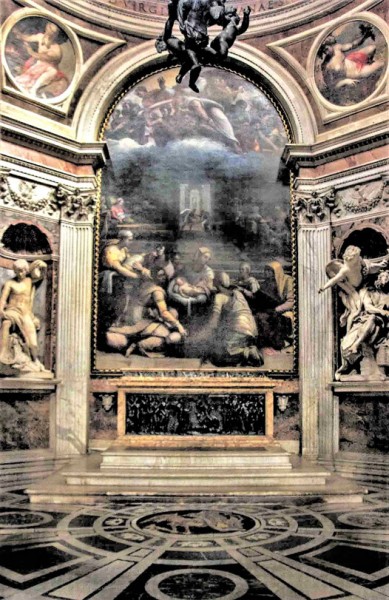
Chigi Chapel, Basilica of Santa Maria del Popolo
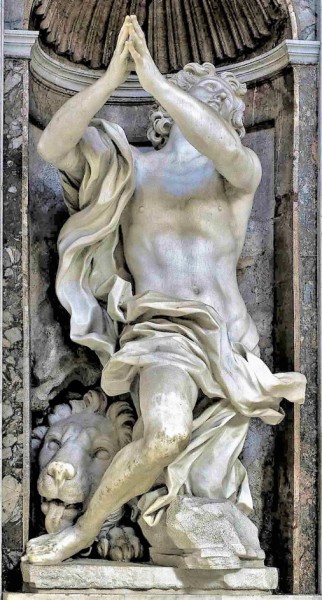
Basilica of Santa Maria del Popolo, Chigi Chapel, statue of Daniel, Gian Lorenzo Bernini
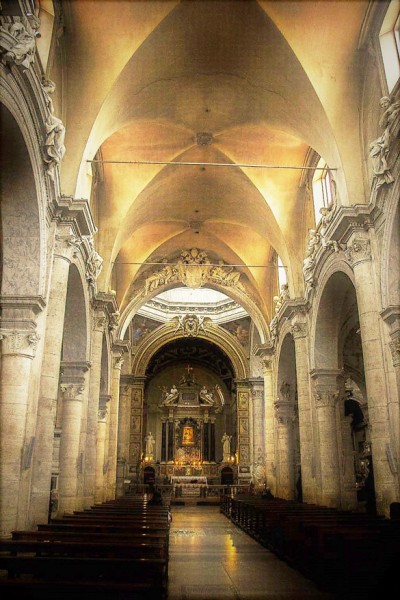
Basilica of Santa Maria del Popolo, interior modernized by Pope Alexander VII
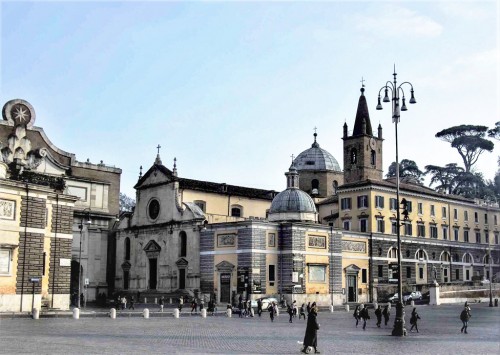
Piazza del Popolo, view of the Basilica Santa Maria del Popolo
We enter the chapel and immediately our eyes are drawn to a group of figures, which seems to blast open the niche in which it finds itself – an older man in a dynamic pose, who is held by an angel by his lock of hair. The lively gestures of their hands indicate that there is a conflict brewing. The angel seems to be ordering the man to do something, which he questions, pointing in a different direction. When we follow the angel’s finger, we begin to understand what he means. He is pointing to a figure of another man found in the opposite niche – but what is it that truly connects them and what purpose does this pantomime serve?
We enter the chapel and immediately our eyes are drawn to a group of figures, which seems to blast open the niche in which it finds itself – an older man in a dynamic pose, who is held by an angel by his lock of hair. The lively gestures of their hands indicate that there is a conflict brewing. The angel seems to be ordering the man to do something, which he questions, pointing in a different direction. When we follow the angel’s finger, we begin to understand what he means. He is pointing to a figure of another man found in the opposite niche – but what is it that truly connects them and what purpose does this pantomime serve?
The rather unknown prophet, Habakkuk owes his fame in the field of art to this very marble statue found in the Chigi Chapel in the Basilica of Santa Maria del Popolo. The most important representative of the Chigi family, Pope Alexander VII, put in a lot of effort when he came to Rome in 1652 (still as Cardinal Fabio Chigi) and wanted to have it renovated and adapted to a place of his future burial. He did not yet know that in a few years he would become pope. But even when his plans had changed and he decided to be laid to eternal rest in the Basilica of San Pietro in Vaticano (funerary statue of Pope Alexander VII), he still devoted a lot of attention to the family chapel. He was enchanted by the new ideas of the ingenious sculptor and architect, but also the creator of theatrical scenography, Gian Lorenzo Bernini, who supervised the modernization of the chapel. Apparently, both of them had desires to make it into a veritable pearl of art.
The pope commissioned two more sculptures to add to the already designed by Raphael and completed by Lorenzetti in the previous century, sculptures of Jonas and Elijah. Thus, from every corner of the room, emerge figures of Old Testament prophets placed in the niches. And while Jonas and Elijah are symbols of the saved, Daniel and Habakkuk sculpted by Bernini related to an act of divine intervention itself. The artist began his work with the statue of Daniel (1557) and most likely was inspired by the characteristic twist of the body, in which the main protagonist of an antique sculpture – Laocoön (Laocoön Group), stored in the Vatican, was presented. But what was the inspiration for the presentation of Habakkuk? Most likely Michelangelo’s fresco depicting the prophet Jonas (vault of the Sistine Chapel), but shown here as a mirror image.
Let us then take a look at how Bernini chiseled into stone the words of the Bible, from which we find out that Habakkuk had just finished making pottage and had put bread into it. : He is on his way to the fields to take it to the harvesters. At this very moment, an angel appears to him and tells him what God has ordered him to do. We can almost hear the words directed to Habakkuk: "Carry the dinner which thou hast into Babylon to Daniel, who is in the lions' den.” “Lord, I never saw Babylon, nor do I know the den”, responds the terrified and shocked Habakkuk. “And the angel of the Lord took him by the top of his head, and carried him by the hair of his head, and set him in Babylon over the den in the force of his spirit” (Dn. 14, 33-39).
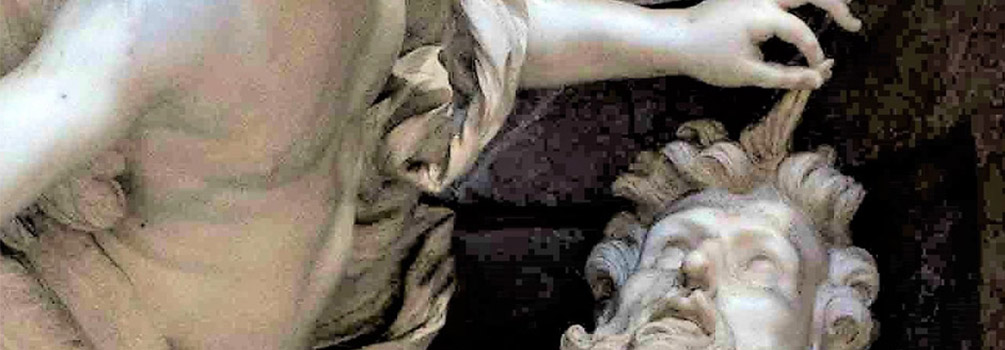
Thanks to Bernini and his sculpture we can clearly see, that Habakkuk unsure of his fate, is hesitant to follow the angel’s orders, apparently fearing for his life. He seems to be resisting, pointing out that he has his own affairs to take care of and the meal is destined for somebody else. But for whom? There can be no doubts – the prophet is pointing to a pyramid found on his left side, meaning the funerary monument of the one who commissioned the chapel, Agostino Chigi, as if he had prepared the meal for him. In order to fully understand the significance of this meal (the Eucharist), we must look closely upon the scene arranged by Bernini. The impatient angel shows Habakkuk the path above our heads, while we – as if in a virtual reality – follow his gesture unknowingly drawn into this dramatic moment of divine intervention. Opposite, we see the calm, even relaxed prophet Daniel, deep in prayer, with an equally relaxed lying lion who is licking the prophet's foot. His prayers have been answered. Even more so, his trust in God and the "divine meal", brought to him by Habakkuk, have freed him from fear and assured him that his reward for prayer is delivery from earthly troubles and hope for salvation. Obviously, the message is universal, but in a particular way, it relates to the function of a funerary chapel. The gift of Habakkuk, which is a symbol of the Eucharist, enables the deceased to start on a path towards resurrection. In this context, we can fully understand the gesture of the hesitant Habakkuk, who prepared his Eucharist meal for the representatives of the Chigi family buried within the chapel.
But was Bernini so perverse and bold as to suggest that, Habakkuk did not want to come to Daniel’s aid, only due to the family from which the man who had commissioned the chapel – Pope Alexander VII – had come?
Prophet Habakkuk and the Angel, Gian Lorenzo Bernini, 1661, marble, Chigi Chapel, Basilica of Santa Maria del Popolo
If you liked this article, you can help us continue to work by supporting the roma-nonpertutti portal concrete — by sharing newsletters and donating even small amounts. They will help us in our further work.
You can make one-time deposits to your account: Barbara Kokoska BIGBPLPW 62 1160 2202 0000 0002 3744 2108 or support on a regular basis with Patonite.pl (lower left corner)
Know that we appreciate it very much and thank You !












